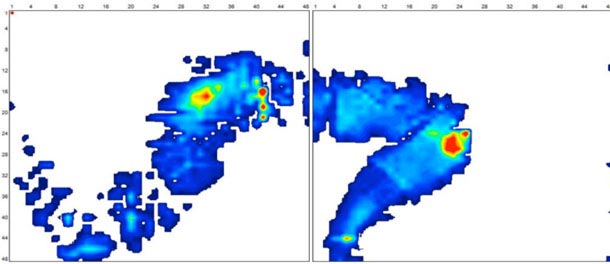As practising healthcare clinicians, we have found that many of our patients are commonly developing musculoskeletal and other health problems as a result of poor mattress selection. Sleep is an important requirement for us to function on a daily basis – nothing replenishes our bodies and minds more than a good night’s sleep
Recommending mattresses as healthcare professionals can be a minefield – what constitutes not just a ‘good quality’ mattress, but the correct mattress? The issues include,
- What type of mattress is suitable for each patient?
- How do you relate the patient’s condition with the right mattress?
- What components/materials should be used?
While bedding manufacturers might have a great deal of knowledge and insight into the materials required to make a mattress, as healthcare professionals, our concern is around recommending a mattress system that also considers alignment and pressure – factors which contribute to healthy sleep and minimise health issues.
We have no active control on spine alignment during sleep. A non-neutral posture can apply lateral bending, sheering and unbalanced loading on intervertebral disks, facet joints and associated soft tissues. Repair and restoration of intervertebral disks as a hydrated tissue and soft tissues are based on the amount of pressure and its manner of application on them. With the correct spinal alignment and pressure during sleep, these structures are unloaded and can repair and rehydrate to restore their elasticity.
Research has been done on the effect of mechanical parameters of sleep systems (cushion, mattress, bed base) on the posture of an individual, manner of load distribution, comfort and physiological responses of the body like muscle relaxation. The effect of these parameters on the soundness of vertebral column has been also investigated. Soft surfaces cause the increase in lower back pain due to incorrect support of vertebral column. There against, mattresses with high stiffness lead to shoulder and hip pain, and cause the decrease in sleep quality and improper distribution of body loads.
Research has also suggested that to maintain the spine in optimal alignment during sleep is the use of surfaces with different elastic properties, the so called custom-made arrangement. However, individuals with different body types require different mattress features in order that the mattress maintains their spine in natural alignment with minimal pressure during sleep. Every person should have an individually adapted mattress according to their physical needs and conditions.
Inadequate support of the lumbar spine during sleep could contribute to the development of low back pain. Lumbar support during sleeping could be even more important for subjects with chronic or recurrent low back pain.
At PrescriBED, we take the guesswork out of bedding by using a unique three step process we’ve developed to prescribe the best mattress for your body. It is the most validated and reliable diagnostic system available. We are able to provide patients with cutting edge and unmatched technology with the best and most advanced materials available.
With a mattress that supports your body both in alignment and pressure, your body will be able to rest and rejuvenate to its full potential. We know as healthcare professionals the negative ramifications of poor sleep. By analysing spinal alignment and physical pressure between the body and mattress, areas of high pressure or mal alignment, can be eliminated, allowing you to enjoy a deeper, more restful sleep.
Our diagnostic process below addresses the issues that research has demonstrated that if you do not have spinal alignment or if there is too much pressure on the body, there are health consequences.
1. Clinical assessment
Brief Orthopaedic history and assessment. Where appropriate, information from the patient’s respective healthcare provider.
2. Diagnostic assessment
Alignment
We use a Spinal Laser to measure spinal neutral. We need to eliminate any sheering, side bending or pressure through the spine.

Pressure testing
Measure of pressure between the patient and mattress with the use of a sensor matt. A pressure map is a computerized clinical tool for assessing pressure distribution. We find the mattress that exhibits the least amount of pressure on the body

3. Prescription
Combining information from the clinical and diagnostic assessments the patient will be prescribed a mattress perfect for their body based on science not guesswork.
The development of these measurements has enabled us as clinicians to make objective and reliable judgement regarding effectiveness of mattress prescription.
